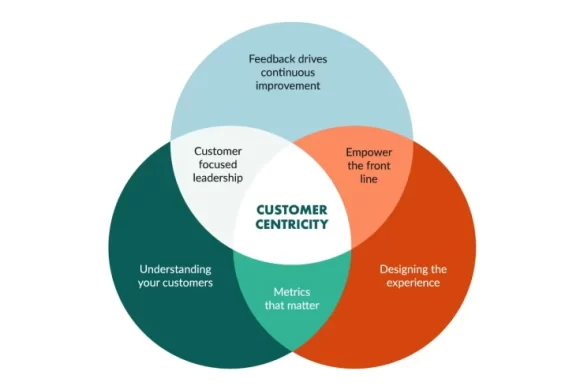
Understanding your B2B audience is crucial for the success of your marketing strategy. Changes in your audience can significantly impact your B2B approach and hinder your ability to reach your target market effectively.
Importance of Audience Research in B2B Marketing
It's essential to conduct thorough audience research in the B2B space. Here are key takeaways to consider:
- B2B marketing necessitates audience segmentation and personalization, distinguishing it from B2C approaches.
- Effective B2B market research involves studying existing customers, gathering insights from the sales team, staying updated on industry trends, and analyzing competitors.
- Research helps in defining target markets, creating buyer profiles, tracking customer needs, differentiating your brand, refining offerings, and enhancing ROI.
Distinguishing B2B and B2C Audiences
Understanding the disparities between B2B and B2C audiences is crucial. Here are key differences to note:
Decision Makers
In B2B, decision-making units are complex, involving various stakeholders. Content must cater to the entire decision-making team, unlike in B2C where individual preferences prevail.
Need vs. Want
B2B purchases are driven by business needs, not wants, unlike consumer-focused B2C transactions.
Target Audience
B2B audiences are smaller and prioritize long-term relationships. Personal connections and in-depth knowledge characterize B2B interactions.

Strategies for B2B Audience Research
Here are actionable ways to delve deeper into your B2B audience:
- Study Your Existing Audience: Leverage insights from current customers to enhance your understanding of your target market.
- Engage Your Sales Team: Collaborate with your sales team to gather valuable customer feedback and bridge any service gaps.
- Stay Informed on Industry Trends: Keep abreast of industry developments to align your strategies with emerging trends.
- Analyze Competitors: Study competitors to gain insights into audience preferences and industry benchmarks.
Benefits of B2B Audience Research
Effective B2B research yields numerous advantages for your business:
- Establish Your Target Market: Define your target market with precision to tailor your marketing and sales efforts.
- Create Buyer Personas: Develop detailed buyer personas to guide your communication and strategic decisions.
- Track Customer Needs: Monitor evolving customer needs to adapt your offerings in response to market dynamics.
- Set Yourself Apart: Learn from competitors to differentiate your brand and capitalize on market gaps.
- Refine Offerings: Refine your products based on customer feedback and market demands to enhance value proposition.
- Monitor Performance: Continuously assess customer satisfaction and performance metrics to drive improvements.
- Increase ROI: Implement data-driven marketing campaigns that focus on customer-centric approaches to boost ROI significantly.
Key Takeaways
Remember, your audience is at the core of your marketing strategy. Prioritize audience research to unlock valuable insights and drive business growth effectively.
Frequently Asked Questions
What are the 5 marketing concepts?
These five marketing concepts are:
- Branding: A brand is a person's image. It's what people see when they hear your brand name. It's important to establish a brand identity that is consistent across media.
- Positioning – Your positioning is the way you position yourself in your market. How can you best describe who you really are?
- Message- This is your message's main content. What is your point What's the point?
- Marketing mix: This combination of channels and pricing to get your message across to your target market.
- Measurability – How can you measure your success?
How does marketing fit into business strategy?
Every business strategy must include marketing. Without marketing, no one would know what your company offers. Marketing would be meaningless without sales. Marketing is essential to any business plan.
Marketing is important, but not everyone gets it. Marketing is not just about spending money on advertising campaigns. Marketing is more than just advertising. Marketing can be described as everything you do that communicates your company's identity or position in the market.
When you think about your business, ask these questions: What image am I trying convey? What will my customers think of me? How should I present myself to the world?
If you can't answer these questions, then you aren't thinking about marketing.
What eCommerce Marketing Strategy should you follow?
There are three main types eCommerce marketing:
- Direct marketing
- Search Engine Optimization (SEO)
- Social Media Marketing
Direct marketing is sending emails directly to buyers. These emails could contain discounts, coupons, and other special offers. This type marketing aims at building customer loyalty and trust.
Search engine optimization helps improve the ranking of your website when you search engines like Google or Yahoo. When your website appears at the top of search results when people type in keywords related to your product, you'll get more visitors.
Social media marketing is done using websites like Twitter, Facebook and Pinterest. You can connect with your target audience. It's easy to set-up and use, and it's effective.
Each of these methods has its pros and cons. SEO is time-consuming and requires effort while direct advertising is easy to do. If you are only focused on one aspect of eCommerce marketing, you may not see the full benefit. We recommend combining multiple types of marketing.
Sending emails could be one way to promote your products and help you rank well in search engines results. You can also advertise via social media and link to your site through those pages.
As you can see, there are many ways to market your eCommerce store. Select the best options for your company and keep them in place over time. Best of luck!
What are the major types of marketing?
Marketing is the act of communicating ideas, values, and messages to consumers. Advertising and marketing are often interchangeable these days. Marketing is more than advertising. Marketing encompasses all forms of communication used to promote and market a product/service.
The three key components of marketing include branding, promotion, and distribution. How a company is identified to its target audience is called branding. Promotion is the act or obtaining attention for your brand using paid advertisements, promotional materials, and public relations. Distribution is how your message gets to your audience. Distribution can be done via traditional methods such as television, radio and print. But, the new technology has made it easier.
What should I budget on my first digital marketing campaign for?
It all depends on the campaign you launch. Your initial campaign costs between $50 and 100.
Advertisement space can be purchased for search engines such Google or Bing. These ads typically cost $10 per click.
Banner advertisements can be placed on websites. This will help attract new visitors, and also bring back old ones to your site.
You can also hire a freelancer to design some banners for you. Freelancers charge typically $20 to $30 an hour.
Once you have created your first ad, you can begin tracking results. There are many free analytics programs available on the web.
You can also manually track data. To track information about your campaigns, keep a spreadsheet that records each metric (clicks, impressions and so on).
You can then determine whether your campaign was a success by collecting these data.
If you don't find one that works, you can experiment with different techniques until you find one.
What are some direct marketing examples?
Direct Marketing Examples include postcards, brochures, flyers, e-mails, etc.
Direct marketing allows people to reach you at their homes or wherever they happen to be. Direct marketing is the best way for customers to choose your product or service over other brands.
Know what type of message would be most appealing to your target markets.
You need to know what your customer wants, and then deliver it.
Direct marketing can be used in many ways to promote your company. You could send potential customers catalogs or advertise in local newspaper.
A unique mailing list can be created from your existing customers. If you have good contacts, it is easy to add new subscribers.
Last but not least, ask existing customers if promotional materials are something they'd be interested in receiving. Special offers may be offered by some companies to get discounts.
What is the difference between advertising and marketing?
Advertising is a type of communication that promotes products and brands. Advertising is usually accompanied by a clear call for action, such “Buy Now!” Click here.
On the other hand, marketing is a way of communicating your company's mission, vision, and values to potential customers. Marketing can also help build relationships between current and potential customers.
Online sales of shoes can be a great example of marketing. You may use marketing to tell a story about you and what you have to offer. You might talk about your background, philosophy, or commitment to quality. Perhaps you could give testimonials from happy customers. Perhaps you can even hold an event where people are encouraged to visit your website by giving away free shoes.
Marketing is all about telling stories. Advertising is about selling things.
Statistics
- From 2020 to 2022, eMarketer predicts that digital marketing will grow by 36% and take up 54% of marketing budgets! (marketinginsidergroup.com)
- Meanwhile, a PartnerPath poll found that co-marketed ads help 68% of consumers arrive at a buying decision before even speaking to a salesperson. (influencermarketinghub.com)
- According to statistics, 60% of online shoppers worldwide actively search for coupons before purchasing from a virtual shop. (influencermarketinghub.com)
- Companies that use personalization are seeing revenue increases ranging from 6-10%. (blog.hubspot.com)
- 81% of brands employ affiliate marketing, and eCommerce sites are particularly good candidates. (blog.hubspot.com)
External Links
neilpatel.com
moz.com
- SEO Learning Center, Moz
- [Case Study] How Moz Ranked #1 for High-Volume Keywords in Less Than 3 Months – Moz
statista.com
- TikTok quarterly first-time installation 2021
- Statista: E-commerce in the world – Statistics & Facts
influencermarketinghub.com
How To
20 Best Affiliate Marketing Strategies to Try In 2022
Affiliate marketing is a great way to make money online. It's also among the easiest methods to get started because you must sign up with an affiliate network like Commission Junction or ShareASale and then place links on your website or blog. The commission you receive when someone purchases from one of those links will earn you a commission.
Here are 20 ways to market your affiliate business in 2022.
- Make a Content Calendar
- Google Adwords
- Start Your Podcast
- Join A Blogging Network
- Register Your Email Address
- Get Paid For Reviews
- Get Influential
- Offers Free Trials
- Start a Membership Website
- Amazon Sells Products
- Write Articles
- Start a YouTube Channel
- Host Events
- Develop A Mobile App
- Promote Your Business Online
- Run Facebook Ads
- Create a Twitter account
- Increase your Instagram Followers
- Be open with your customers
- Make More Long-Term Money
————————————————————————————————————————————–
By: 6679
Title: Understanding B2B Audience Research: A Comprehensive Guide
Sourced From: internetlib.org/how-to-research-b2b-audiences/
Published Date: 4/26/2023 1:19:32 AM
